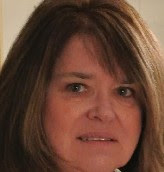
Good v. evil is perceived in different ways in three novels by Dan Brown (The Da Vinci Code, Angels & Demons, and The Lost Symbol) and one by Anne Rice (Angel Time). Anne Rice has stepped up to the plate to take on this struggle and--as a woman--boldly bites into the apple. Dan Brown, a bit more cerebral, juxtaposes the polarity between reason and religion with the dark side of each.

The imagery from The Lost Symbol largely derives from Masonic symbols, such as the square, compass, and G for geometry/God shown above.

One of the climatic turns Robert Langdon's feverish trail takes is to the sub-basement of the U.S. Capitol. A Mason--at the time of George Washington and Benjamin Franklin--would meditate in a Chamber of Reflection such as this. (photo from Freemasonry: a history by Angel Millar.) ". . . cold, austere places in which a Mason can reflect on his own mortality. By meditating on the inevitability of death, a Mason gains a valuable perspective on the fleeting nature of life." (from The Lost Symbol by Dan Brown.) This is a mystical world based on Ancient Mysteries, i.e. The Bible, displayed in symbols throughout Washington, DC, and a race against evil. Two lovely images are 1) the field of Noetic Science, that "the intention of the mind can create change in the phsyical universe," and 2) the pyramid without a tip is a "reminder that man's ascent to his full human potential was always a work in progress." ~Dan Brown

Anne Rice envisioned hordes of angels descending to earth in response to just as many prayers wafting up through the ages. Her hitman-cum-angel Toby O'Dare plays the lute, emotes to Stravinsky's The Rite of Spring, and is soothed by the lush beauty of the Mission Inn in California. Her descriptions delight the senses: "But the interior of the restaurant was no less enticing, with its lower walls of bright blue tile, and the beige arches above artfully with twining green vines. The scored ceiling was painted like a blue sky with clouds and even tiny birds." Yes, he is prepared to go back to the Middle Ages to answer some of those soaring prayers.

Angel on cover of Angels and Demons

One of the Illuminati symbols in Dan Brown's Angels and Demons was fire. How could that represent evil?

The Sistine Chapel has soaring grandeur as well as buried secrets that threatened to bring down the Catholic Church in Angels and Demons.


In the Da Vinci Code, Mary Magdalene is portrayed as one of Christ's intimates.










































































